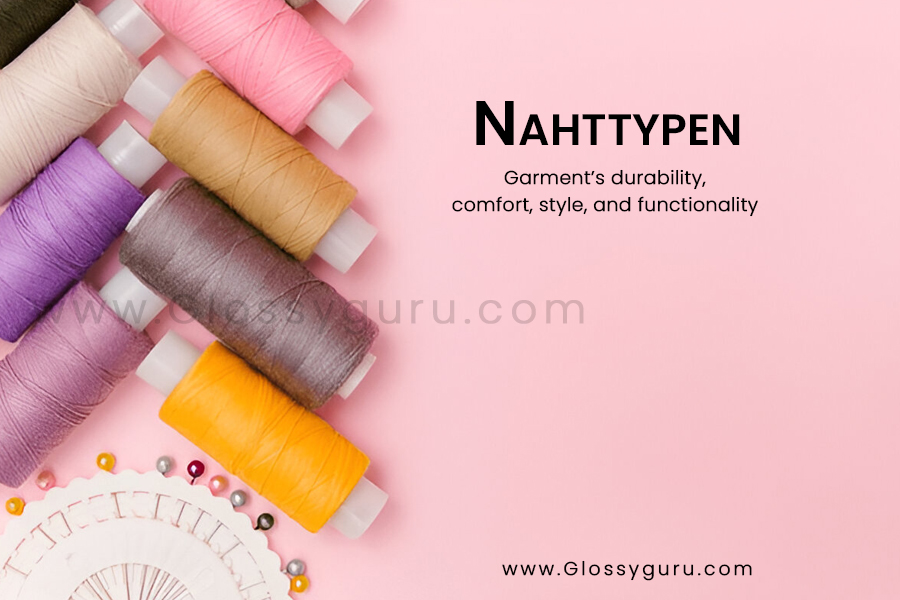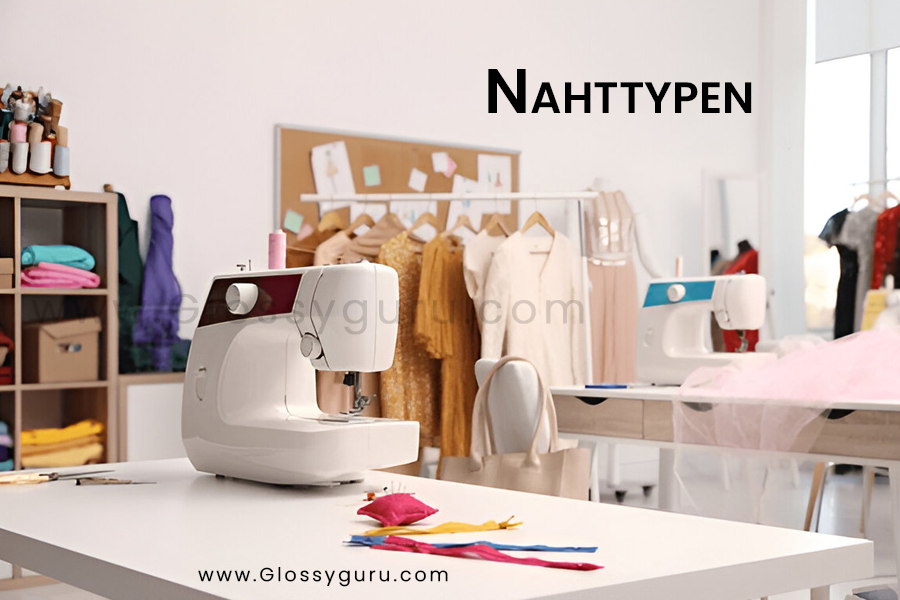If you’re here searching for nahttypen, you probably want to know what it means and why it matters in sewing and fashion. The German term nahttypen translates directly to “seam types” in English. It refers to the different methods used to stitch two or more pieces of fabric together. While seams may look like simple joining lines, they play a huge role in determining a garment’s durability, comfort, style, and functionality.
From delicate silk blouses to rugged denim jeans, every item of clothing depends on the right type of seam. Choosing the wrong one can make garments weak, uncomfortable, or unattractive. That’s why understanding nahttypen is not just important for professional tailors and fashion designers, but also for beginners and DIY sewing enthusiasts.
In this comprehensive guide, we’ll cover everything about nahttypen—the history, categories, detailed explanations of seam types, expert tips, mistakes to avoid, industry use cases, and even cultural seam traditions. By the end, you’ll have a complete 6000-word reference that answers every question about seam types.
What Are Nahttypen (Seam Types)
At the most basic level, Nahttypen are the techniques used to hold fabric together. But each seam goes beyond just connecting fabric—it determines how clothing behaves.
- A French seam makes garments look neat inside and out.
- A flat-felled seam gives jeans their signature strength.
- An overlock seam prevents fabric from fraying.
- A zigzag seam stretches with knitwear.
Every seam has a purpose. The choice depends on the fabric, garment function, and design goal
The History of Nahttypen
Early Clothing and Seams
In prehistoric times, humans used animal sinew, bone needles, and plant fibers to hold together hides and woven fabrics. These early seams were purely functional—strength mattered more than looks.
The Middle Ages
As fashion evolved in Europe, so did seam techniques. Medieval tailors began experimenting with gathered seams, lapped seams, and decorative stitches for aristocratic garments. Seams were no longer invisible—they became part of fashion.
The Industrial Revolution
The invention of the sewing machine in the 19th century changed everything. Suddenly, lockstitch seams and standardized seam types became common in factories. Jeans, uniforms, and mass-produced garments relied on strong, repeatable seams.
Modern Era
Today, we use a mix of traditional hand seams and machine seams. Haute couture still values fine hand-stitched seams, while the fashion industry depends on industrial overlocks and automated seam technology.
Why Are Nahttypen Important in Sewing?
Seams are often underestimated. But if you ask any experienced tailor, they’ll tell you that good seams make the difference between amateur and professional work.
Here’s why nahttypen are so important:
- Durability – Strong seams mean garments last longer.
- Comfort – Well-chosen seams prevent rubbing and irritation.
- Style – Decorative seams add design elements.
- Fabric Control – Seams shape garments to the body.
- Finish – Neatly done seams give clothing a professional look.
Example: A luxury silk dress with raw zigzag seams would look unfinished. Likewise, a heavy denim jacket with delicate French seams would tear apart quickly. Choosing the right seam is essential.
The Main Nahttypen (Seam Types)
Now, let’s go through all the major seam types, their construction, pros and cons, and best uses
1. Plain Seam (Geradstichnaht)
The plain seam is the most basic seam used in everyday sewing.
How it’s made:
- Place two fabric edges right sides together.
- Sew a straight stitch along the edge.
- Press open or to one side.
Best for: cotton, polyester, everyday clothing.
Pros:
- Easy, fast, and versatile.
- Works with almost any fabric.
Cons:
- Raw edges fray if not finished.
Tip: Combine with overlock or zigzag for durability
2. French Seam (Französische Naht)
A French seam hides raw fabric edges inside the seam.
How it’s made:
- Sew fabric wrong sides together first.
- Trim seam allowance.
- Turn the fathe bric right sides together and sew again.
Best for: silk, chiffon, organza.
Pros:
- Neat inside finish.
- Prevents fraying completely.
Cons:
3. Flat-Felled Seam (Kappnaht)
Used in jeans and workwear, this seam is extremely durable.
How it’s made:
- Sew fabric right sides together.
- Trim one edge shorter.
- Fold the longer edge over and stitch down flat.
Best for: denim, uniforms, outdoor wear.
Pros:
- Strong and long-lasting.
- Resistant to fraying.
Cons:
- Bulky on heavy fabrics.
4. Overlock Seam (Versäuberungsnaht)
Made with a serger (overlock machine).
How it’s made:
- Machine trims fabric edge.
- Wraps the edge with thread loops.
- It can be combined with a straight stitch.
Best for: knitwear, stretchy fabrics, casual clothing.
Pros:
- Prevents fraying.
- Professional finish.
Cons:
- Requires a special machine.
5. Zigzag Seam (Zickzacknaht)
Commonly used in home sewing.
How it’s made:
- Set the machine to zigzag stitch.
- Sew along the fabric edge or over the raw seam allowance.
Best for: stretchy fabrics, knitwear.
Pros:
- Flexible, stretches with fabric.
- Easy to make on standard machines.
Cons:
- Less strong than an overlock.
6. Lapped Seam (Überdeckte Naht)
One piece overlaps the other.
How it’s made:
- Place one fabric edge over the other.
- Stitch both down.
Best for: leather, outdoor gear, upholstery.
Pros:
- Strong and flat.
- Decorative potential.
Cons:
- Requires precise alignment.
7. Bound Seam (Eingefasste Naht)
Edges are bound with bias tape or a binding strip.
Best for: jackets, luxury garments, and unlined coats.
Pros:
- Clean finish.
- Strong reinforcement.
Cons:
8. Decorative Seams (Ziernahttypen)
Used for style rather than strength.
Examples:
- Topstitching
- Double seams
- Piping seams
Best for: fashion design, crafts, handbags.
9. Stretch Seams (Elastische Nähte)
Designed for sportswear and activewear.
Examples:
- Twin-needle stretch seam
- Coverstitch
Best for: leggings, swimwear, t-shirts
10. Hand-Stitched Seams
Though machines dominate, hand seams are still used in couture.
Examples:
- Slip stitch
- Backstitch
- Fell stitch
Choosing the Right Nahttypen
When selecting a seam, ask yourself:
- What fabric am I using?
- Is strength or beauty more important?
- Will the seam be visible?
- Do I need flexibility or firmness?
Example:
- A silk wedding dress → French seams.
- A pair of jeans → Flat-felled seams.
- A t-shirt → Overlock seams.
Step-by-Step Guide to Sewing Popular Nahttypen

Sewing a French Seam:
- Sew the wrong sides together at 0.5 cm.
- Trim excess fabric.
- Press seam.
- Fold right sides together and stitch again.
Common Mistakes in Nahttypen
- Skipping seam finishing → leads to fraying.
- Wrong seam for fabric → garment breaks quickly.
- Uneven seam allowance → poor fitting.
- Not pressing seams → looks unprofessional.
Nahttypen in Different Industries
- Fashion Design – clean, elegant finishes.
- Workwear – strong flat-felled seams.
- Sportswear – stretch seams for flexibility.
- Upholstery – lapped seams for durability.
- Luxury Couture – hand-stitched French seams.
Nahttypen in Cultural Sewing Traditions
- Japan – kimono seams rely on straight, minimal seams.
- India – decorative seams in sari blouses.
- Africa – bold topstitching for design expression.
- Europe – tailored seams for structured clothing.
Seam Finishes for Nahttypen
Seams often require finishes for durability:
- Pinking shears – prevent fraying.
- Bias binding – encloses edges.
- Overcasting – zigzag or serger edge.
- Hong Kong finish – couture style bound edges.
Modern Seam Technology
- Laser-cut seams – used in sportswear.
- Bonded seams – no thread, glued seams.
- Ultrasonic seams – fabric joined with sound waves.
These futuristic nahttypen are common in athletic and waterproof clothing.
Expert Tips for Mastering Nahttypen
- Always pre-wash fabric before sewing.
- Use matching thread color for invisible seams.
- Test stitch tension on scrap fabric.
- Press seams after every step.
- Combine seam types when needed.
Conclusion
Understanding nahttypen (seam types) is essential for anyone working with fabric—whether you’re a beginner or a professional designer. Seams aren’t just lines of thread; they are the foundation of durability, beauty, and function in every garment.
From plain seams in everyday clothing to French seams in luxury dresses, and from flat-felled seams in jeans to modern bonded seams in sportswear, every seam serves a purpose.By mastering nahttypen, you can take your sewing to the next level—creating garments that look professional, last longer, and feel comfortable.
FAQs About Nahttypen
Q1: What is the strongest seam type?
The flat-felled seam is considered the strongest.
Q2: Which seam is best for delicate fabrics?
The French seam is perfect for silk and chiffon.
Q3: Can I sew seams without a sewing machine?
Yes, hand stitching like backstitch can be very strong.
Q4: What is the difference between a seam and a stitch?
A seam is the joining line; a stitch is the unit of thread that forms it.
Q5: How do I prevent seams from puckering?
Use correct needle size, adjust tension, and press seams carefully.
Q6: Which seam is most common in t-shirts?
Overlock seams or coverstitch.
Q7: What seam do jeans use?
Flat-felled seams for durability.
Q8: Can seams be decorative?
Yes, many designers use visible topstitching as a style choice.
Don’t miss out on any news—keep in touch for real-time information, visit: Glossy Guru.!

